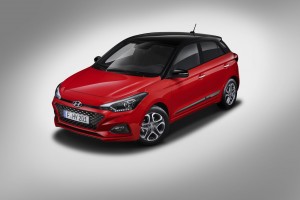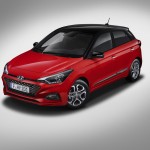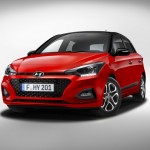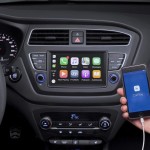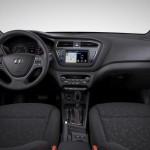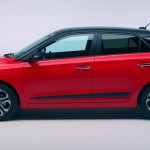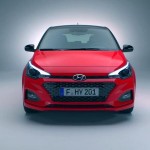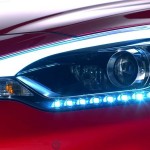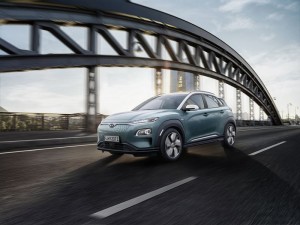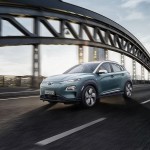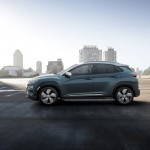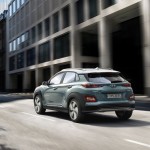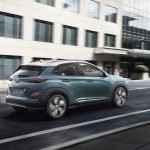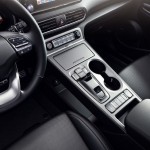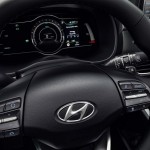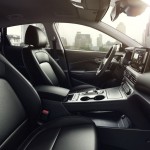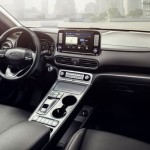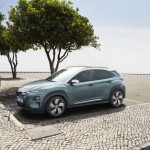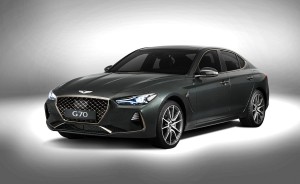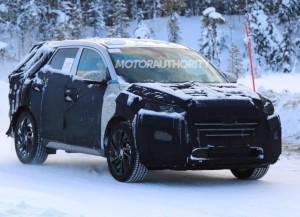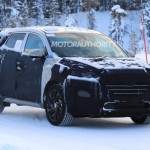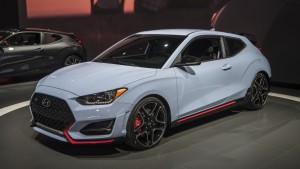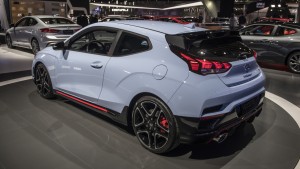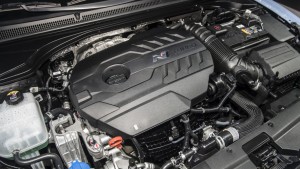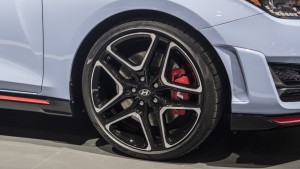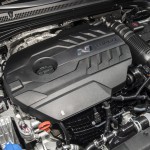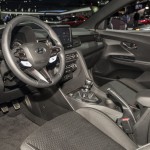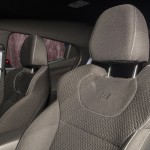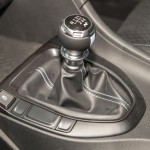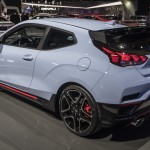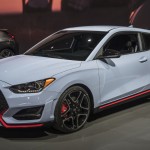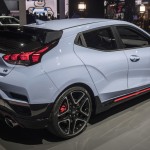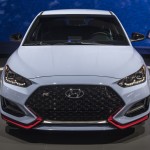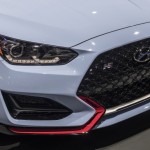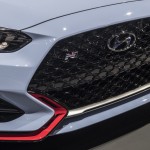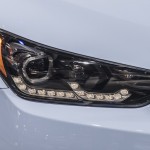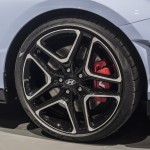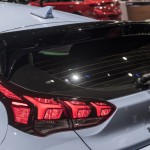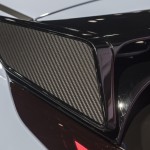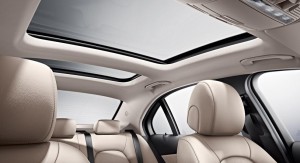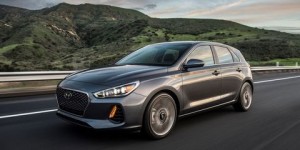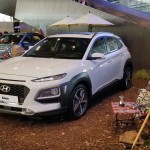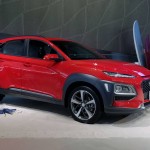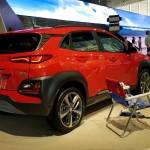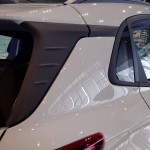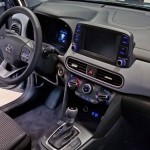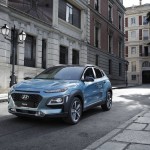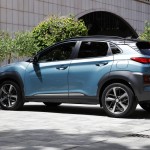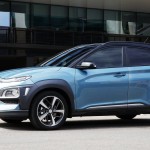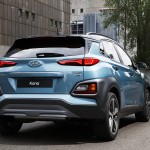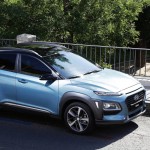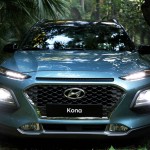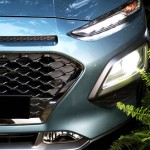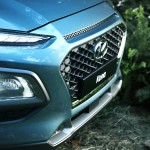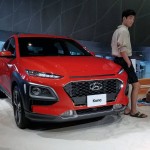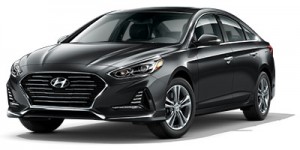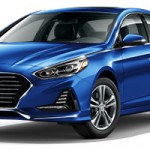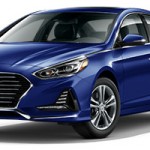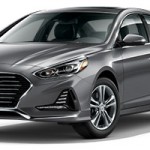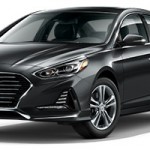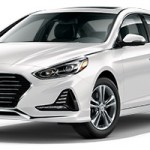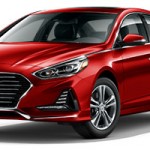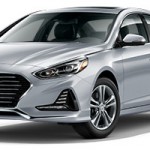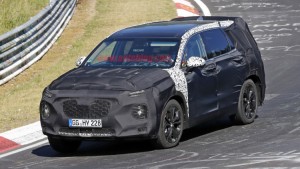Tag Archives: hyundai
4 Things To Know About The 2018 Hyundai i20
The Hyundai i20 is known for being affordable and practical, thanks to its power efficiency and a number of tech features inside. The South Korean brand has finally revealed a refreshed model for the i20, which last saw an upgrade back in 2014.
The updated line has gas-powered engines and the latest tech safety features available in the market.
1. Exterior
There are a number of body styles that the 2018 Hyundai i20 is offering, which will basically cover as many segments as possible. The body styles include a five-door hatchback, a sportier three-door hatch, and a crossover “Active” body style.
The 2018 model year gives a slightly upgraded design to the i20. There’s a restyled cascading grille design up front, a two-tone roof option, and alloy wheel sizing between 15 and 16 inches. There are more exterior paint colors, too, such as Tomato Red, Champion Blue, and Clean Slate. The other carry-over hues are Passion Red, Sleek Silver, Stardust Grey, Polar White, and Phantom Black.
2. Interior
The layout of the cabin is pretty basic and straightforward. Since this is a practical car, at the most, that should not be a problem to owners. The steering wheel has a thumb-operated multifunction buttons and red contrast stitching. There’s a center-mounted digital driver’s information display, and a push-button start finishes off the look.
Buyers can get an optional panoramic sunroof, but that will cost more. And for the infotainment section, the Hyundai i20 will have features that include navigation, media support, and connectivity services. Cargo room, on the other hand, is rated to have 11.5 cubic feet.
3. Performance
There will be no more diesel option for the 2018 Hyundai i20. The carmaker, instead, opted for a variety of gas-powered engine configurations—a turbocharged Kappa 1.0-liter three-cylinder T-GDI and a naturally-aspirated Kappa 1.2-liter engine.
4. Prices
The 2018 Hyundai i20 will arrive in dealerships in June and sold in the European market. Hyundai did not provide exact pricing for the cars, but expect it to be around $16,513.
Hyundai Kona Electric Showcases Powertrain Versatility
The Hyundai Kona Electric was introduced last week at the New York Auto Show, marking another level of versatility that the brand is bringing to its US utility lineup.
The Kona Electric is a pure EV subcompact crossover that go an estimated 250 miles on a single charge. It’s part of the series of announcements that Hyundai made to introduce an all-new lineup. Last February, the South Korean automaker said that the redesigned Santa Fe will have a diesel option in 2019, which marks Hyundai’s first diesel in the US market. The fuel-powered Nexo will also continue to be around to build on the brand’s “hydrogen legacy.”
The Kona Electric will be rolled out to targeted markets only. Hyundai said that the EV subcompact crossover will be produced in Ulsan, Korea, and will be initially available in California. Later on, other states with California’s zero-emission vehicle regulations will follow the launch. The availability will start in the fourth quarter of 2018.
What the Kona EV brings to the table is “peace of mind” and “flexibility,” according to Hyundai Motor America COO Brian Smith. Why? The 250-mile range is father than the capability of EVs before the Kona EV. Previous EVs can only muster up around 100 or 150 miles.
The closest competitor of the Kona EV is the Chevy Bolt, a hatchback that has the capacity of 238 miles in a single charge. Though Tesla Model 3 has a 220-mile range, it is a sedan and does not fall under the same category as the Kona.
A lot of cross-shopping will happen, Smith claims, as customers who want EVs suddenly have the option of buying a CUV because it’s out in the market now. The 250-mile range will also allow many people to go two to three days without charging, and that’s a big factor to consider.
The Kona EV gets 19.2 cubic feet of rear cargo space, which is the same as the gasoline version of the crossover. Pricing details have not been announced yet.
2019 Hyundai Genesis G70 Will Come With Manual Transmission Option
The upcoming 2019 Hyundai Genesis G70 compact sports sedan will come with a manual transmission option, a representative for the South Korean automaker said. Genesis is Hyundai’s standalone luxury brand.
This manual transmission option has just placed the G70 in a segment that has increasingly become lacking of options that would allow you to “row your own” vehicle. Kevin Smith, Genesis’ spokesman, said in a report by The Car Connection that the 6-speed manual gearbox will be paired with the G70’s standard 2.0-liter turbo-4. There are no details though on the pricing of these different trim levels.
It is further revealed that the G70’s manual option is only for purists, which means those who can handle the turbo-4 and a rear-wheel drive. On the other hand, the more powerful 3.3-liter twin-turbo V-6 engine will be exclusive with the 8-speed automatic that will be optional with the turbo-4.
It’s in the fuel economy that will suffer, apparently. The rear-wheel-drive G70 will be powered by the 2.0-liter inline-4 with manual transmission. That has an EPA rating of 18 mpg city, 28 highway, and 22 combined. Compare that to the 22/30/25 mpg for the G70 with an automatic transmission, the turbo-4, and rear-wheel drive, and the manual option surely did a take a lot of hit.
The rest of the lineup will have these ratings: 21/28/23 mpg for the turbo-4, the 8-speed automatic, and the all-wheel drive, 18/26/21 mpg for the optional V-6, and 18/25/20 mpg for the V-6 and all-wheel drive.
The G70 will probably make its debut this early 2018 as a 2019 model, so that should come anytime soon. As for the prices, though there is no official word yet, it will probably be in the $30,000 bracket.
Aside from the Hyundai Genesis G70, other luxury models from other brands offering manual transmission are the Cadillac ATS, Audi A4, and BMW 3-Series.
A Look at the Major Changes in the 2020 Hyundai Tucson
Spy shots of the prototype of the 2020 Hyundai Tucson revealed major changes are in the works for this next-generation compact SUV from the South Korean brand. The prototype showed that there are a number of updates on the exterior and the cabin of the popular SUV.
The changes are quite significant, according to a report on Motor Authority, as there will be new lights and a new grille even. Based on the hints we’re getting, we won’t be surprised if we get a Tucson that follows some of the details and changes on the new 2019 Hyundai Santa Fe. We all know there was a huge positive reception to the Santa Fe, so what’s stopping the South Korean automaker from making similar changes to the Tucson?
Inside the cabin, the center stack was completely redesigned by foregoing the integrated infotainment screen on the current Tucson and replacing it with a tacked-on screen. This is a design that Hyundai has been introducing on its latest models.
There’s no word yet on whether there will be upgrades on the powertrains but what’s on the current Tucson model might be carried over to the 2020 model. They’re all pretty okay, so far. This means that buyers will have the option to choose between a 2.0 liter inline-4 that can produce 164 horsepower or a 1.6-liter turbo inline-4 with 174 horsepower on tap.
Admittedly, there are still a lot of missing information here. But hopefully, we get more details as the plans for Tucson emerge. It is, after all, due for a release next year as a 2020 model.
Like many automakers, Hyundai is heavily investing on its line of SUVs and compact SUVs. The Kona was recently launched and the new Santa Fe will soon be available in showrooms. Another update from Hyundai is that it’s currently working on a three-row SUV.
Hyundai Reveals “Hottest Ever Hatch” To The Market Through The Veloster N
Aren’t we all excited what Hyundai has in store for us when it introduced the new N performance sub-brand? Well, here it is in the form of the 2019 Veloster N. It’s not only truly capable on the road, but it looks so good too.
Hyundai has high aspirations when it comes to producing the “hottest hatch ever,” and it horsepower, thanks to its turbocharged inline-4 engine and sportier chassis, it also has a more aggressive look. Overall, the new hatchback from the South Korean automaker falls somewhere between sport compacts such as Volkswagen Golf GTI and Honda Civic Si and the more powerful Golf R and Civic Type R.
If you are familiar with the Europe-only market i30 N, the Veloster N almost looks similar to that. It is, in fact, available in the same Performance Blue paint with red trims on the front fascia and side skirts. The colors black, red, and white are also available. There’s an N badge on the grille, making sure everyone knows you’re not driving just any Hyundai out there.
The power is coming from a turbocharged 2.0-liter inline-four that can produce up to 275 horsepower and 260 lb-ft of torque, almost the same figures with the i30 N. This engine is paired with a 6-speed manual transmission while an electronically controlled limited-slip differential is optional equipment.
Enthusiasts will also be welcoming a slew of new performance features such as adaptive dampers, launch-control capability, automatic rev matching, and a variable exhaust. There are five driving modes, including an “N” that is meant for the race track.
Like the idea of large wheels? You can choose between an 18-inch base wheel wrapped in 225-series Michelin Pilot Super Sport performance tires and an optional 19-inch wheel has wider, 235-series Pirelli P Zero rubber.
There are no pricing details yet, but we’ll expect the Veloster N to play in the range of $25,000 to $30,000.
Photo Source: Autoblog
Is the Sunroof on Your Car Really Safe?
For some, the sunroof on the car can be considered as a luxury feature. Most premium models of different automakers offer them either as an optional add-on or as a standard fit in their top trim units. While the sunroof allows a breeze of fresh air into the cabin of the auto as well as a nice view of the sky, statistics indicates that these also pose hazards to the occupants of a vehicle.
According to Consumer Reports, there have been many documented cases in the U.S. of exploding sunroofs. The National Highway Traffic Safety Administration recorded at least 859 complaints connected to shattering sunroofs from 1995 to 2017. Most incidents occurred within the first two years of the vehicle’s ownership.
Hyundai had the most number of exploding sunroofs over the last 22 years. The brand had 119 complaints over the course of the research. It was followed by Ford with 85, Nissan with 82, Kia with 78, Scion with 72, Toyota with 61, Honda with 53, Volkswagen with 38, Cadillac with 28, and BMW with 27 cases.
In terms of car model, the Scion TC topped the list with 71 complaints. The Hyundai Veloster came next with 54, Kia Sorento with 43, Nissan Murano with 28, Kia Optima with 25, Ford Explorer with 23, Honda Accord with 22, Cadillac SRX with 22, Nissan Maxima with 20 and Hyundai Santa Fe with 20 cases.
What was very alarming about the data was that most cases didn’t even involve rollovers. Complainants claimed that their sunroofs just exploded out of nowhere and without anything hitting them.
Consumer Reports said that safety standards with regard to sunroofs are currently not at pace with their longer and wider designs. Experts stated that the bigger the expanse of the glass in the sunroof, the higher is its likelihood to break.
Since Hyundai had the most recorded cases, its aftermarket parts subsidiary Hyundai Mobis unveiled its panorama sunroof airbag. The company told in a interview that it has a deployment time of only 0.08 second. However, the airbag only activates during rollovers. Therefore, it is not clear if it can solve the issue centered on sunroofs suddenly exploding even without anything hitting them.
Pricing Details of Hyundai Elantra GT Sport Released
Hyundai released the prices for the Elantra GT Sport with the hatchback starting at $20,235, including an $885 destination charge. The hatchback will be based on the i30 than the Elantra sedan we see in the United States. This hatch will have a more European-inspired styling than all the other vehicles in the lineup.
Standard to all models is a six-speed manual transmission while an automatic transmission will add $1,000 on the price tag of the base model. The base Elantra GT comes with a naturally aspirated 2.0-liter I-4 that has an output of 161 horsepower and 150 lb-ft of torque. Inside, you’ll find Hyundai’s standard equipment such as a rearview camera, 17-inch alloy wheels, LED daytime running lights, and an 8-inch Display Audio infotainment system with Apple CarPlay and Android Auto compatibility.
The Elantra GT is designed with sportiness in mind, even the base model. But what most people are looking forward to is the Elantra GT Sport, which is being sold for $24,135. Thanks to a turbocharged 1.6-liter I-4, the Elantra GT Sport can produce 201 horsepower and 195 lb-ft of torque. This engine is paired with seven-speed dual-clutch transmission for an extra $1,000. It also gets a multi-link rear suspension, larger brakes, and 18-inch alloy wheels wrapped in high-performance all-season tires.
Right now, the Elantra GT is directly competing with the hatchback versions of 2017 Honda Civic ($20,575), 2017 Volkswagen Golf ($20,715), and the 2017 Civic Si if it has a hatchback variant. The 2017 Civic Si sedan and coupe has a starting price of $24,775, which is $640 more than the Elantra GT Sport with the same specifications.
The total interior space of all Elantra GT hatchbacks is 120 cubic feet, 25 cubic feet of which is solely for cargo room. Owners have the option to add heated and ventilated front seats, dual-zone climate control, navigation with Blue Link telematics, wireless charging, LED headlights, and a seven-speaker Infinity audio system. Also available are the following safety features: automatic emergency braking with pedestrian detection, lane keep assist, adaptive cruise control, and Hyundai’s Driver Attention Alert.
Hyundai Kona Is Going Tiny With Its New Crossover
Hyundai just announced that its new mini crossover called the Kona is going to be on sale early next year in the United States. That means that the South Korean automaker is finally ready to make a splash in the car industry’s hottest segments.
And that’s not all. According to a source, the Hyundai Kona subcompact crossover will also usher in a new phase for the brand as it features for the first time the automaker’s new design language. That’s a surprising move for the company, which is suffering from a sales slump in the US and is now pressured to do good in the crossovers segment.
The styling originated from Irvine, California, Hyundai’s design studio. It features narrow LED daytime running lights mounted high near the hood line. There are also separate headlights that are positioned lower down the fascia. The effect? The Kona, up front, looks like the Nissan Juke or Jeep Cherokee.
The look isn’t something everyone will love or adore, but the Nissan Juke was surprisingly successful in its sales both in Europe and even in the United States. The Cherokee, on the other hand, sold 200,000 units a year in the US in the last three years. These statistics means well for the Kona and any subsequent Hyundai badges.
Hyundai’s new looks for the crossover will be used on the 2018 and 2019 model of the Santa Fe Sport, which spy shots showed a headlight setup and honeycomb grille similar to the Kona. The new crossover language design, however, signals Hyundai’s willingness to finally break away from a decade of having strong design connection among its crossovers. Now, each nameplate will have a distinct design.
The similar look was necessary because Hyundai wasn’t such a known brand 10 years ago. But now that it has differentiated itself from the rest of the Asian automakers, it’s time to give each vehicle in the lineup a fresh look.
4 Pretty Cool Stuff About The 2018 Hyundai Sonata
The 2018 Hyundai Sonata is unlike the upgrades for the incoming Toyota Camry and Honda Accord in such a way that the upgrades are significant than necessary. Hyundai still plans to battle it out in the crowded midsize family sedan segment, but can they still do it?
The segment is getting significantly smaller because consumers are choosing crossovers more and more. This is a challenge not only for Hyundai, but for Japanese automakers like Toyota and Honda looking to make waves in the midsize sedan segment.
1. Exterior
The most telling change in the new Sonata is the cascading grille up front. The grille is longer and more contoured, and will be part of Hyundai’s new corporate design language. This means consumers will see the same grille across Hyundai’s vehicle lineup. The entire car has a more aggressive appearance, thanks largely to an elongated front end, character lines on the hood and front bumper, and a slimmer pair of LED headlights.
The back end was made simpler by showing off the sheetmetal and the redesigned taillights. For a sportier feel, the turbo models will get twin exhaust pipes.
2. Interior
Inside, the highlights of the new Sonata are the seven-inch touchscreen monitor (eight inches on the Limited edition), the streamlined audio controls, the sporty and leather-wrapped three-spoke steering wheel, and the leather seats, of course.
3. Powertrains
There is an all-new engine, too. An 8-speed, turbocharged 2.0-liter will power the 2018 Sonata to 245 horsepower. Though experts will be disappointed with the lack of increase in the power output division, it’s worth taking a note that even BMW 330i’s 2.0-liter turbo can only produce 248 horses.
4. Release Dates and Prices
The SE, SEL, Limited, and Limited 2.0T models are available now, but the Eco 1.6T is arriving later this summer. Next year, we’ll be treated to the Hybrid and Hybrid Plug-in models. The base price for the all-new Sonata is $22,050 with improvements and other packages upping it to at least $33,460.
Hyundai Santa Fe Spy Shots Surface Online
After unveiling the new Hyundai Kona, new spy shots surfaced online showing a camouflaged prototype of the upcoming Hyundai Santa Fe. Despite the heavy covering, the form of the spied vehicle seems to bear a striking resemblance with the Kona.
The shape of the Santa Fe’s nose in the images here shows that it will sport an aggressive version of the Hyundai’s cascading grille much like the Kona. The bulges in the headlights, bumpers and front lip all indicate that it is based on its smaller crossover sibling too.
The source also noticed from the frontal shots of the Santa Fe that it is carrying Recaro racing seats. But then again, the seats might only not make it in the production version of the auto.
Going to the rear, the new Santa Fe looks like it is keeping many styling elements found in its predecessor. The roofline and window panels are almost alike. There is probably an update in the taillights of the vehicle though.
The report said that the Santa Fe in the spy shots might carry a 2019 model year since we just saw an update in its current model this year. The earliest possible unveiling of the vehicle might be in the next spring or next fall.
A Look at the Present Hyundai Santa Fe
As a recap, the present refreshed model of the Santa Fe has a starting price of $30,800. The vehicle is offered in eight trims. The auto is offered in SE, Limited, SE Ultimate and Limited Ultimate versions. Each of the mentioned models come in two variants—the front wheel drive and the all-wheel drive. The current Santa Fe comes with a V6 engine with 290 hp.
New Hyundai Santa Fe Spy Shots
Check out the spy shots of the upcoming Hyundai Santa Fe model provided by Autoblog in the gallery below:

